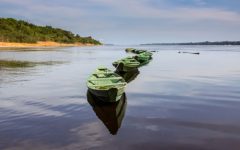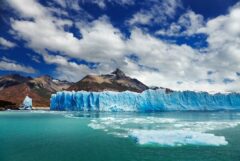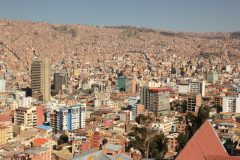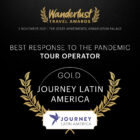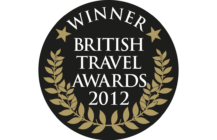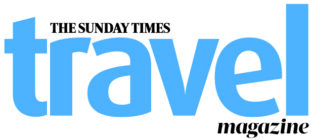Private Journeys
Signature Bolivia: The final frontier
14 days from £4,380pp
(based on two people sharing & excluding flights)
Essentials
-
Tour info
-
Country info
-
What's included
Tour info
Transport
1 flight (1hr); 9 scenic road journeys.
Accommodation
The unique and characterful accommodation on this trip reflects Bolivia’s glorious multi-layered history and culture.
Our city hotels are converted colonial buildings with plenty of historic charm but modern comforts. This adventurous holiday also visits some remote locations where accommodation options are limited, however we have selected what in our view is the best available and some have considerable charm, including a hotel constructed from salt.
Meals
Breakfast daily, lunch days 4,8,11,12; dinner day 8 full board days 3,4,9,12. Some lunches are packed box lunches.
Summary Of Nights
14 days, 13 nights: Santa Cruz 2; Vallegrande 1; Villa Serrano 1 ; Sucre 2; Potosí 1; Uyuni 2; La Paz 2 ; Sun Island 1 ; La Paz 1.
Trip Suitability
There are a few long days of travel on this trip, but as for the most part you have private transport you will have maximum comfort and can make a stop at will.
If you have a disability or other special requirements, please contact us.
Guides
We carefully select our local partners, some of whom we have worked with for over 25 years. Their English-speaking guides understand the expectations of our clients very well, and are consistently singled out for praise by the latter on their return.
Climate
The climate in Santa Cruz is tropical and humid, with temperatures rising to 40°C in the summer months of Dec-Mar. It can rain at any time, but there is also plenty of sun. As you climb into the mountains on your journey towards Sucre the air is fresher and temperatures significantly lower.
Most rain falls Dec-Mar in both Sucre and Potosí: there is a little less sunshine in this period in what are otherwise sunny cities. Potosí is at a higher altitude and can be very cold at night, especially in Jun-Jul.
On the salt flats, most rain falls between January and April when the roads can be very muddy and the itinerary around Uyuni is subject to change. The dry season, Jun-Sep, guarantees sun and an easy drive across the flats, but it’s cold at night with temperatures falling below zero.
The weather in La Paz and Lake Titicaca is dry from late Apr-Oct with daytime temperatures in the high teens/low 20s° C in the sun. Dec-Jan (nominally summer) can be cloudy, and chilly at this altitude (3,500-3,800m).
Altitude
Your stays in Sucre (2,800m), Potosi (4,090m), Uyuni (3,656m), La Paz (3,632m) and Lake Titicaca (3,812m) are at high altitude. Because the trip gains altitude slowly, most people are only mildly affected and if you drink plenty of water and allow your body to acclimatise (don’t exert yourself or drink alcohol for the first couple of days at altitude), you should be OK. Symptoms vary: most common are mild headaches, slight nausea and breathlessness. If you don’t recover in a day or two speak to our representatives; in very rare instances it is necessary to descend to lower altitudes.
Clothing And Special Equipment
If you travel in the Andean dry season, May to October, it will be warm in the sunshine but at altitude chilly in the shade, and at night so you’ll need layered clothing, including fleece, hat, scarf and gloves. From November to April you can expect some rain so you should add waterproofs. In both seasons sunblock, sunglasses and good walking shoes or boots are necessary. Bring a little light loose clothing for the warmer climate in the lowland east.
How To Take It
Cash machines are available in all major cities and towns in both countries, and so taking a debit or credit card with a PIN number is the most convenient way of withdrawing money while on your trip, and in most shops and restaurants you can also pay by card. There are many ATMs in Santa Cruz in La Paz and they are also present in Sucre and Potosí; in many you can withdraw pesos or US dollars. Select “Savings Account” from the menu, even for a debit card. However, since cards can get lost, damaged, withheld or blocked, you should not rely exclusively on a card to access funds.
Since you are also visiting remote places with few facilities, we recommend that additionally you take a reasonable quantity of US dollars cash (no more than is covered by your insurance), which you can exchange into local currency. Dollar bills should be in good condition, soiled or torn bills may be refused.
Currency
The unit of currency in Bolivia it is the peso Boliviano.
Tipping
Tips are welcomed and local guides often rely on their tip as a significant proportion of their income.
Most service industry workers will expect a tip of some kind and so it is useful to have spare change for hotel porters, taxi drivers and the like. It is common to leave 10 – 12% in restaurants.
Insurance
Travel insurance is essential.
Details of our recommended policy can be found on our Travel Insurance page.
Airport Taxes
If you have purchased your flights through Journey Latin America, the international departure tax is usually included in the ticket.
Vaccinations
Preventative vaccinations are recommended against the following: polio; tetanus; hepatitis A. You should consult your GP for specific requirements, including advice on yellow fever and malaria tablets. For specific requirements you must consult your GP.
You can also find helpful information on the Masta Travel Health website.
Visas
Holders of a full British passport do not require a visa, although passports must be valid for at least 6 months after the trip begins. Anyone with a different nationality should enquire with us or check with the relevant consulate.
If flying to the US, or via the US you will need to fill in your online ESTA application.
Country info
When's the best time to visit Bolivia?
The weather can be a critical factor: the altiplano highlands look their best in the sunlight Apr-Oct, in Dec-Jan it can be dull and chilly at this altitude (3,500-3,800m). The lowlands of the east are hot and humid all year around.
For more detailed information visit our When To Go section.
What's the official language of Bolivia?
Spanish is the official language of Bolivia.
What is the national currency of Bolivia?
Peso Boliviano is the national currency of Bolivia. Notes in local currency (and in some cases US dollars), can be withdrawn from ubiquitous ATMs in principal cities and some smaller towns; there are many money exchanges (casas de cambio) and banks which exchange US dollars (a few accept euros or sterling but the rate may be poor).
When withdrawing money from an ATM using a debit card, you are offered a choice of account type from which to make your withdrawal: select 'Credit Card' (ie NOT Current account or Savings Account options).
What's the time difference between Bolivia and UK?
The time difference between Bolivia and the UK is GMT -4 hrs.
Do I need a visa for Bolivia?
Holders of a full British passport do not require a visa, although passports must be valid for at least 6 months after the trip begins. Anyone with a different nationality should enquire with us or check with the relevant consulate.
If flying to the US, or via the US you will need to fill in your online ESTA application.
What vaccinations do I need for Bolivia?
Please check Travel Health Pro for information on health recommendations and vaccinations for the destinations you are visiting. Please note that many Latin American countries require proof of vaccination against Yellow Fever if you have recently travelled to another country where Yellow Fever is present.
What countries combine well with Bolivia?
If you’re planning a trip to South America there are some perfect destinations to combine with a holiday in Bolivia. Try a visit to Peru via Lake Titicaca, 122 km and a couple of hours' drive from La Paz; or even a holiday in Chile, entering the country via the dazzling salt lakes of Uyuni.
What are the festivals, cultural and sporting events in Bolivia?
The key festivals and cultural events in Bolivia are:
Gran Poder: La Paz, Late May/early Jun annually: processions of groups of indigenous dancers in costume, with historical and cultural themes.
Carnival: Oruro, La Diablada, Feb-Mar: One of the most eye-catching on the continent, with parades of people in elaborate costumes.
How do I adapt to the altitude in Bolivia?
Much of Bolivia is occupied by stunning high Andean terrain, with La Paz at 3,500m.
Travel to high altitude can cause mountain sickness and even if you feel fighting fit it’s important to take things easy and stay hydrated (drink plenty of water, avoiding alcohol and caffeine) as you get used to the thin, dry air.
You may initially notice a headache, dizziness or breathlessness and this usually improves with acclimatisation. If you are pregnant or taking the contraceptive pill, have a medical condition such as heart or lung condition, anaemia, asthma, high blood pressure you should seek the advice of your GP before booking.
We also recommend you check your travel insurance covers travel to high altitude. If you’re taking the family, remember small children may be less capable of communicating altitude-related symptoms effectively: keep an eye on them too. Rest assured we will plan your itinerary carefully, taking into account any time spent at altitude. If you have any questions or concerns about altitude please speak to your travel expert.
Further advice on travel to altitude is available on www.travelhealthpro.org.uk.
If you still have questions, please contact us and one of our Travel Experts will be happy to help.
Inspired by this trip
Our exciting range of articles on Latin America explore everything from iconic destinations and lesser-known cultural gems to delicious traditional recipes. You’ll also find exclusive travel tips, first-hand client reviews and the chance to get your personal questions answered by our travel experts.
Papagaio
Your edit for Latin American inspiration
Our exciting range of articles on Latin America explore everything from iconic destinations and lesser-known cultural gems to delicious traditional recipes. You’ll also find exclusive travel tips, first-hand client reviews and the chance to get your personal questions answered by our travel experts.
View Extraordinary Inspiration

